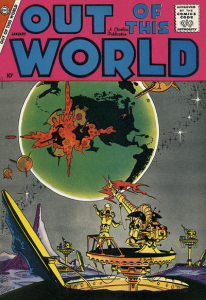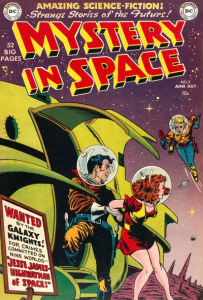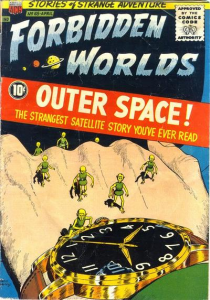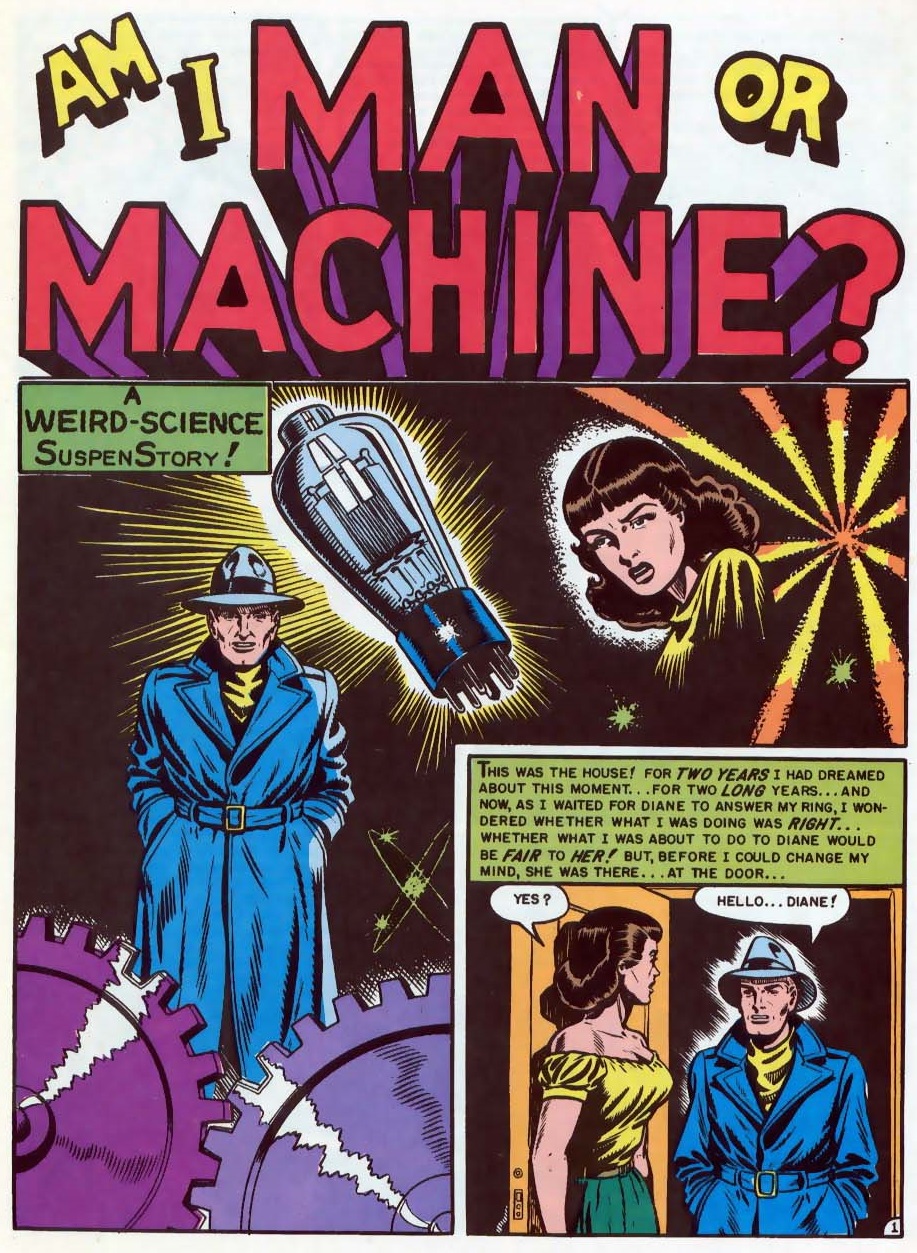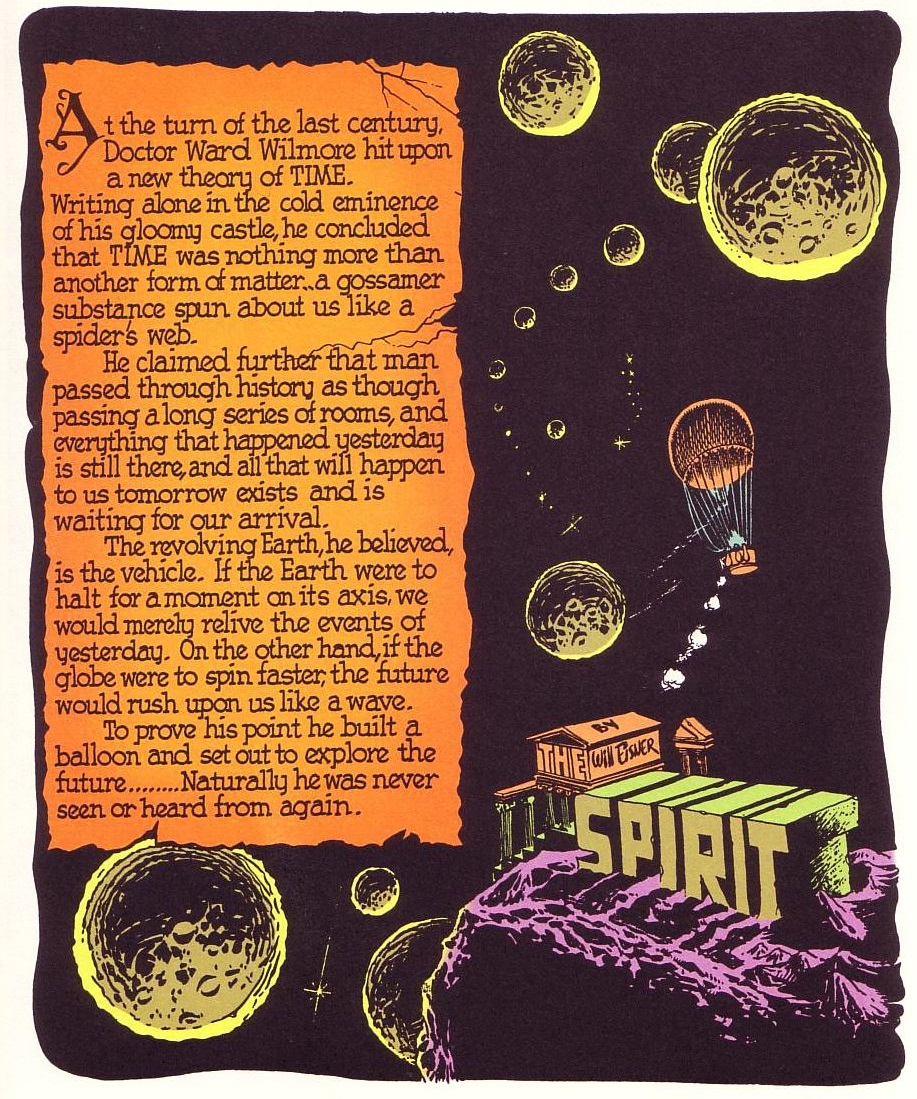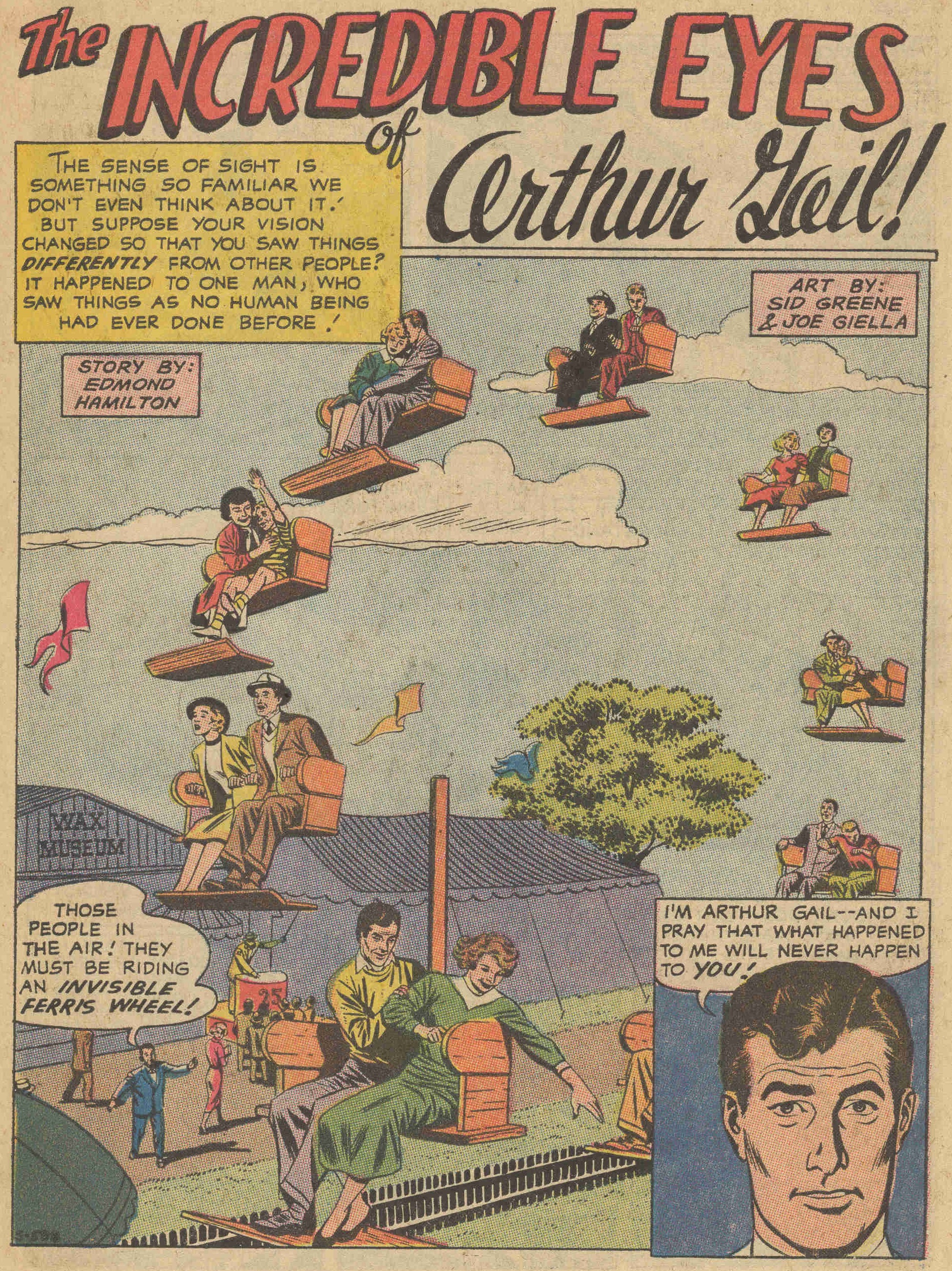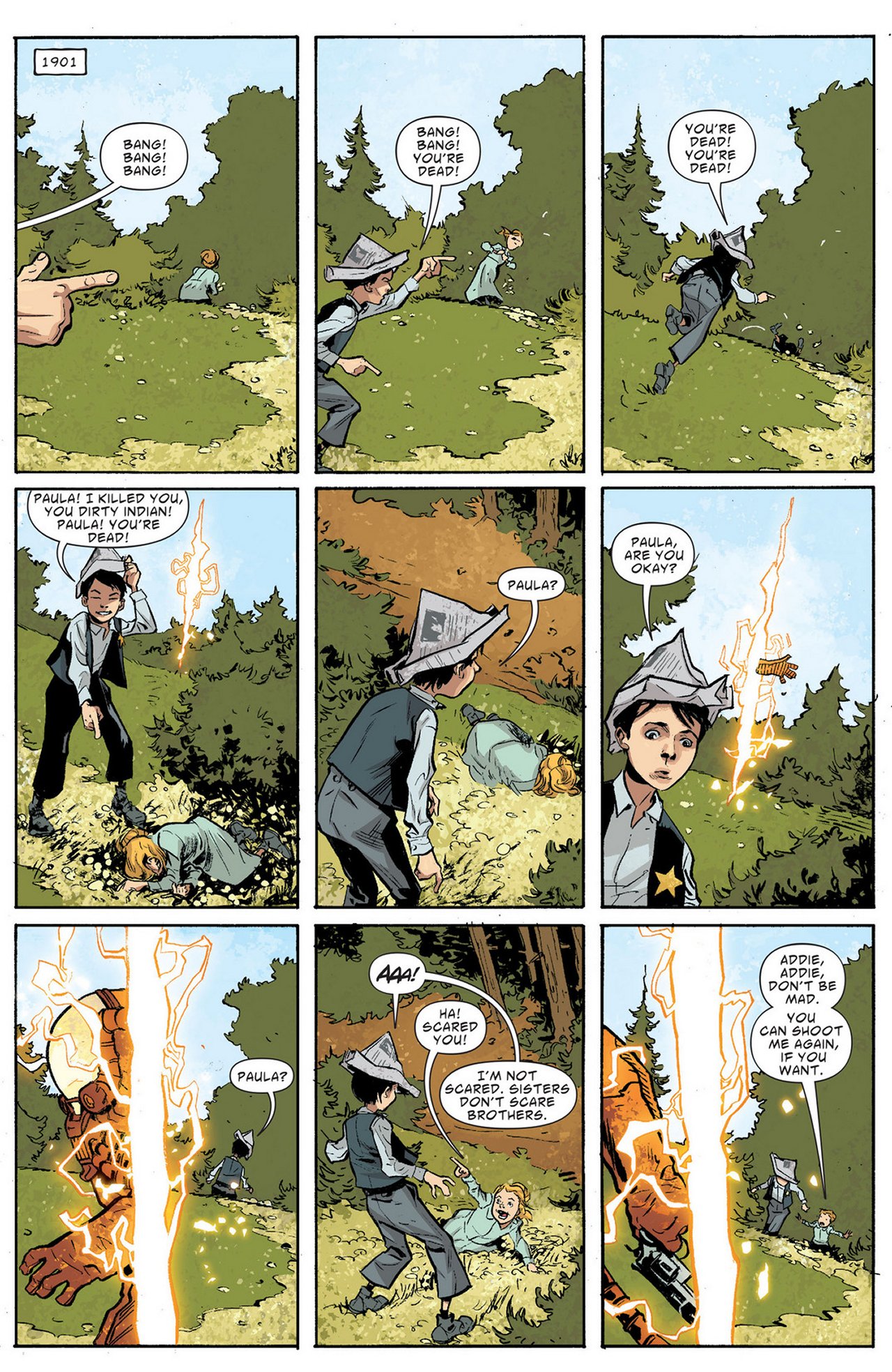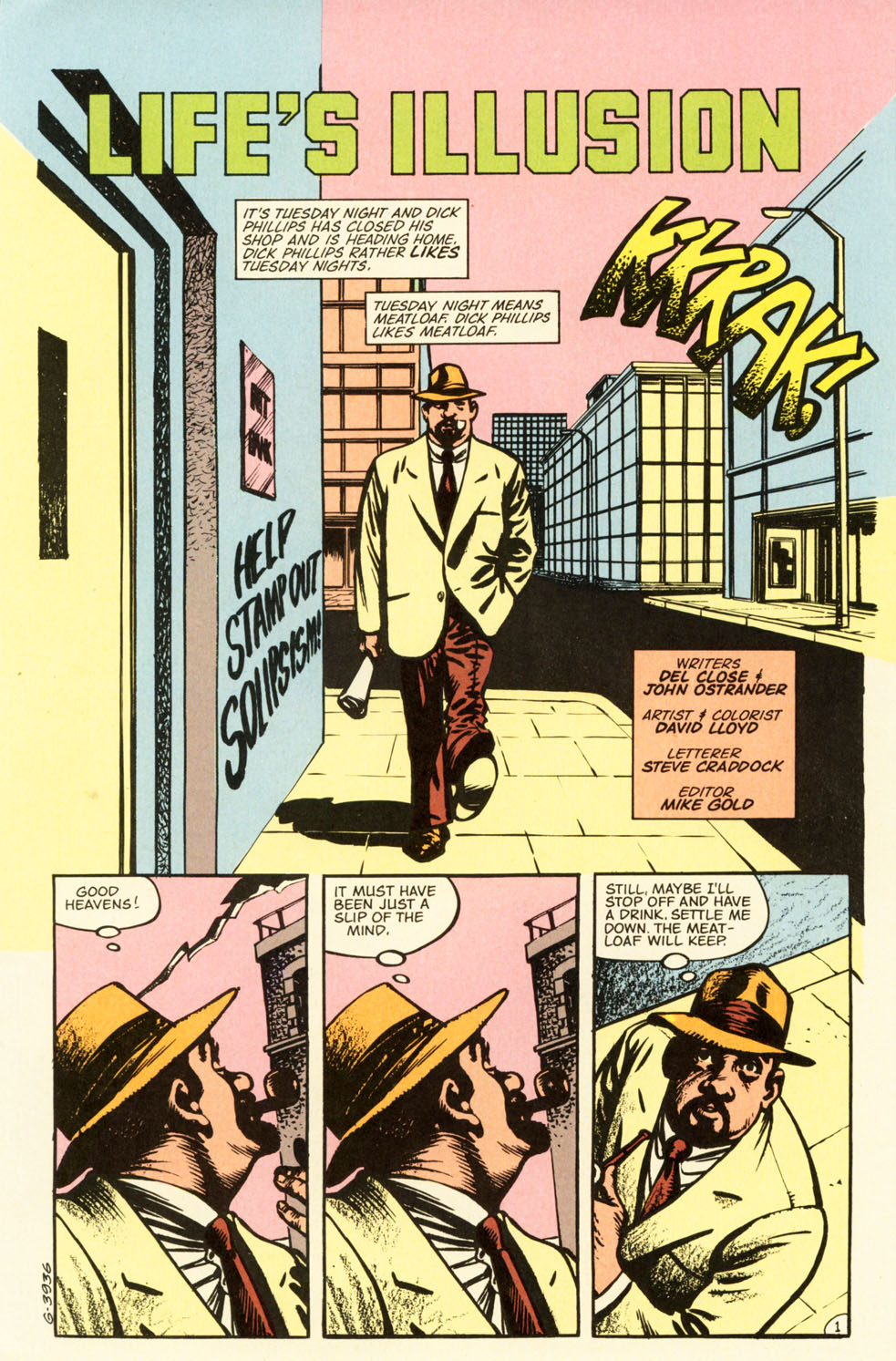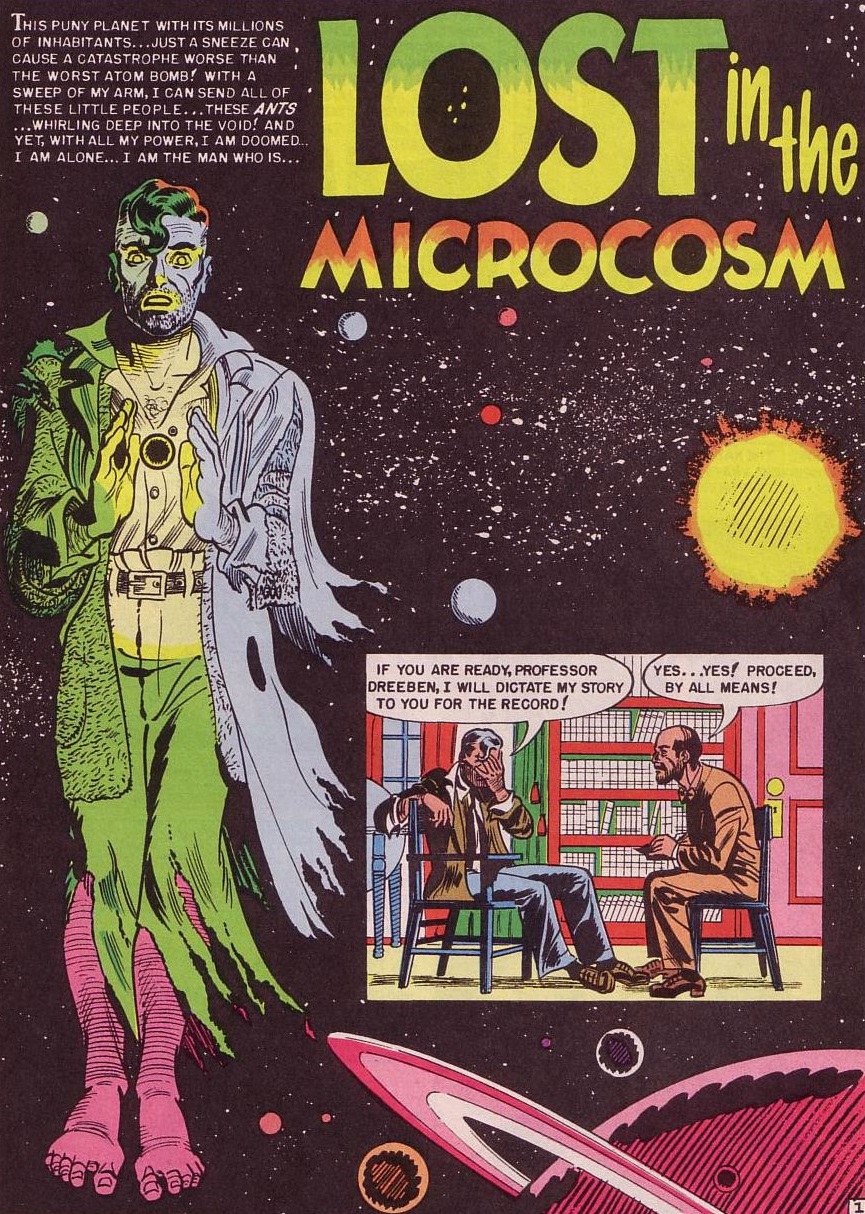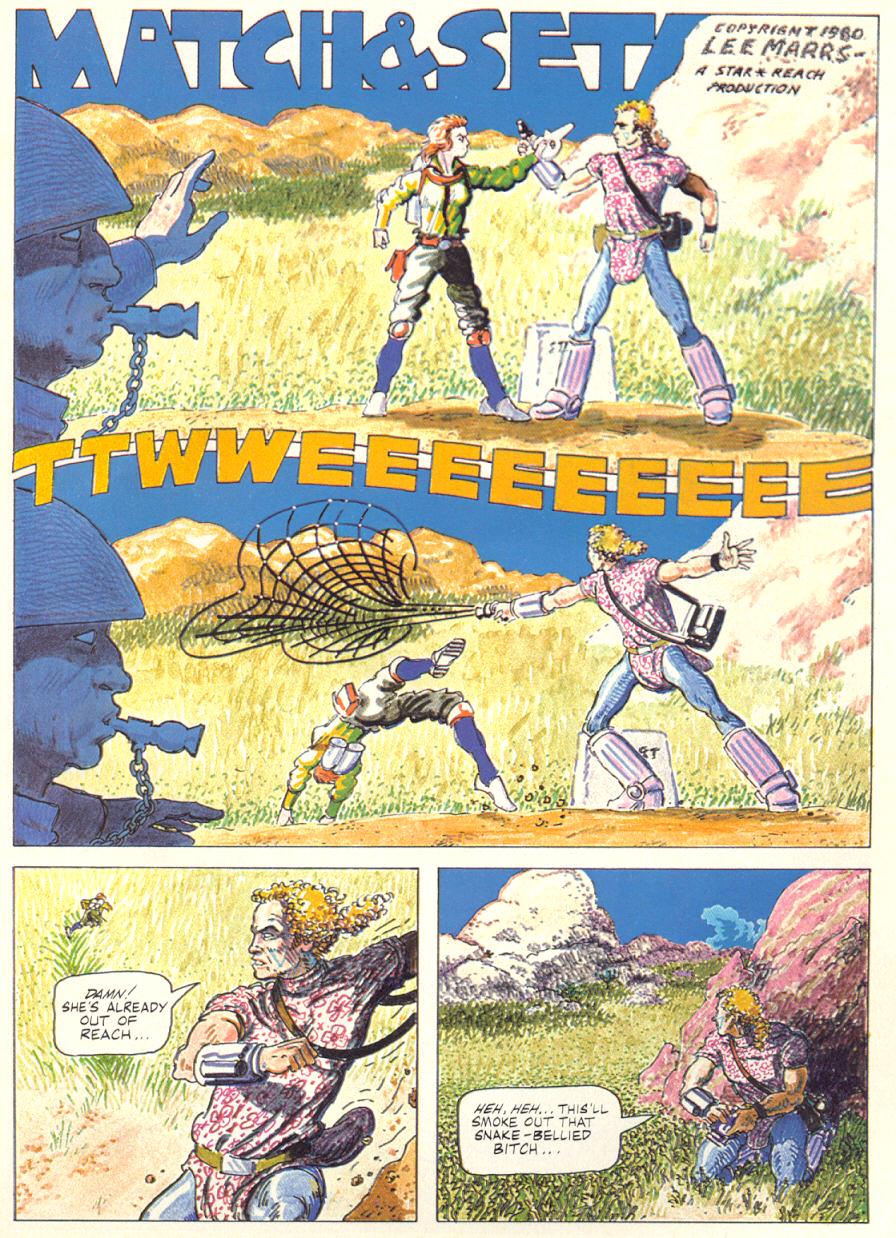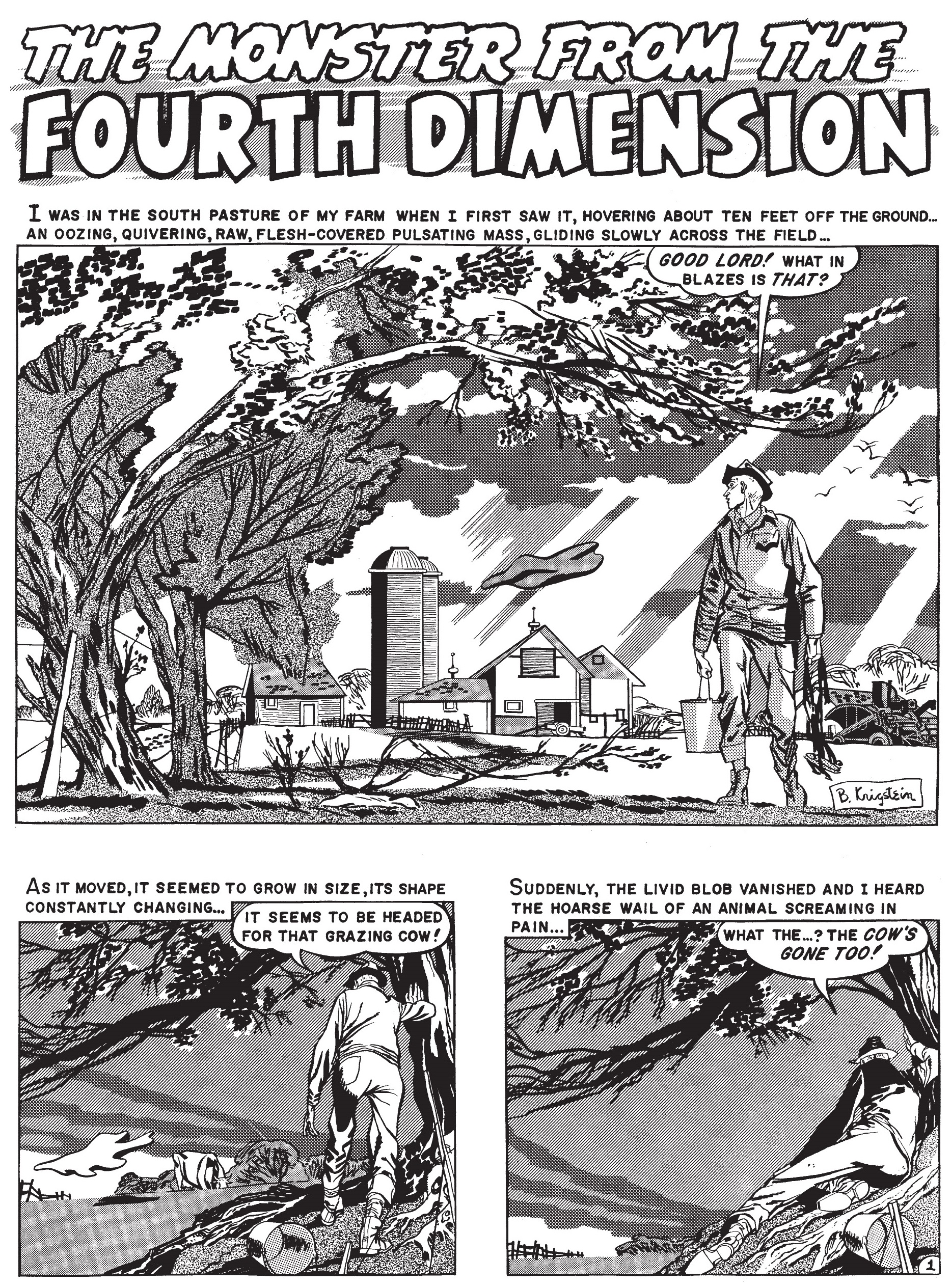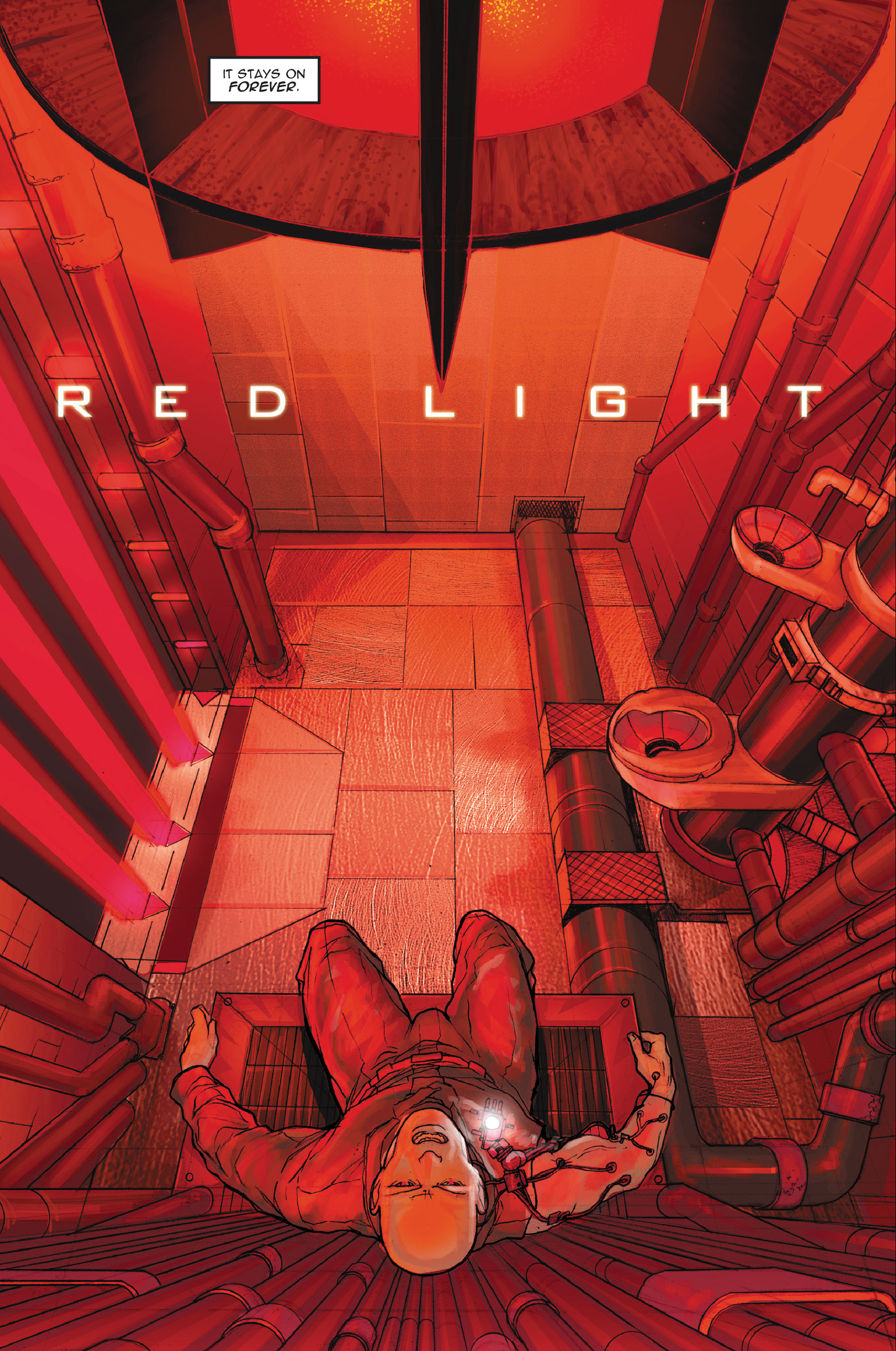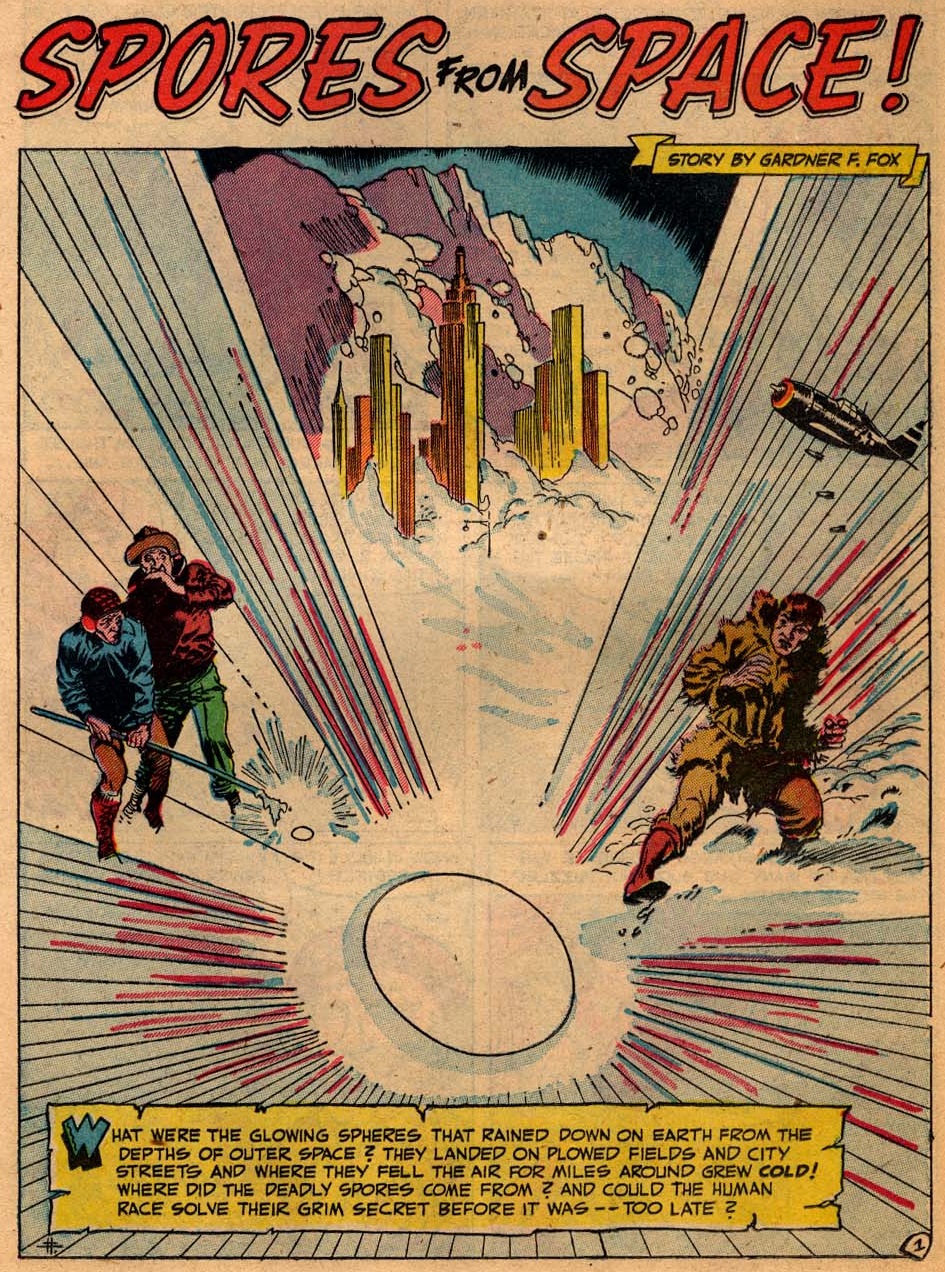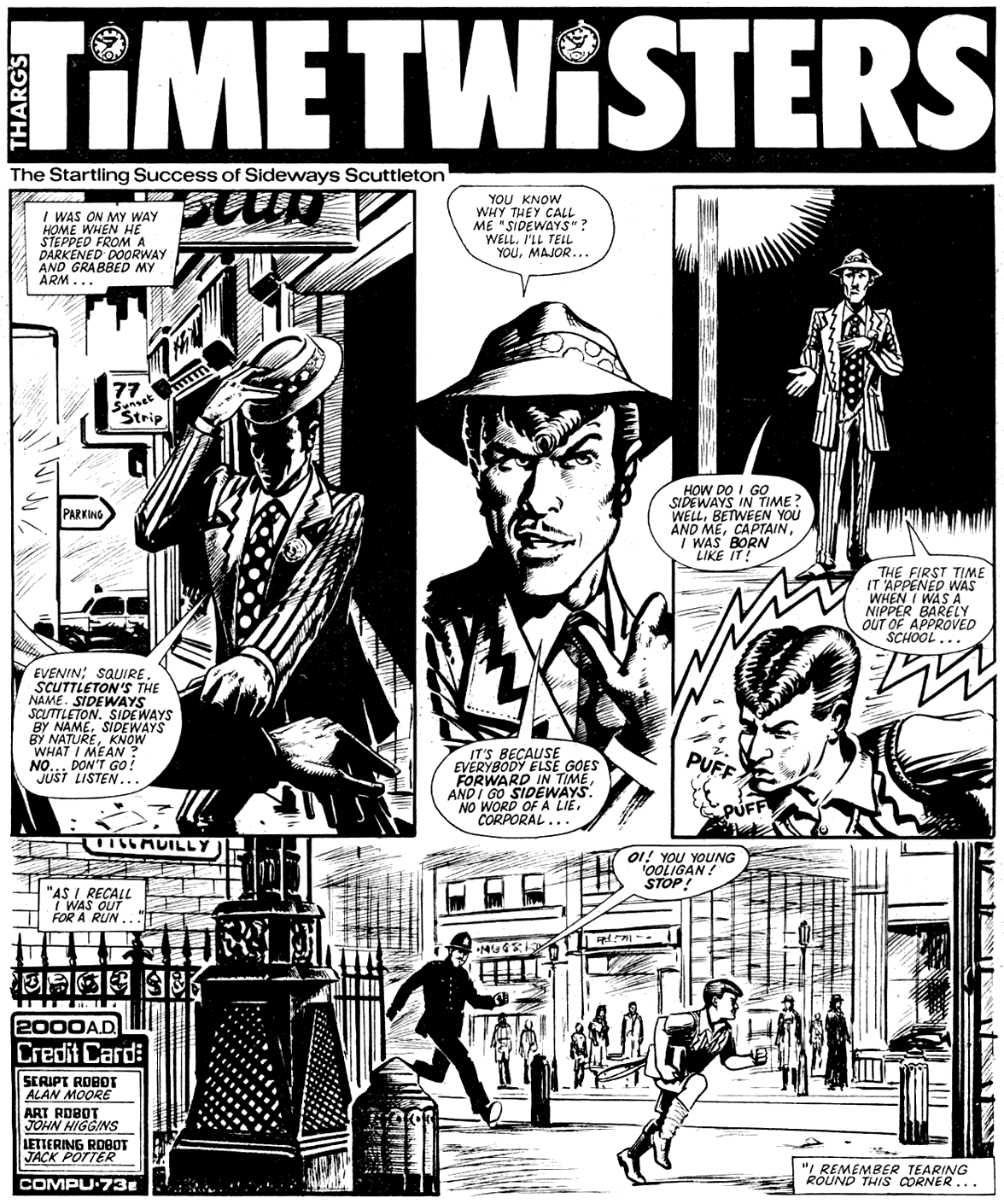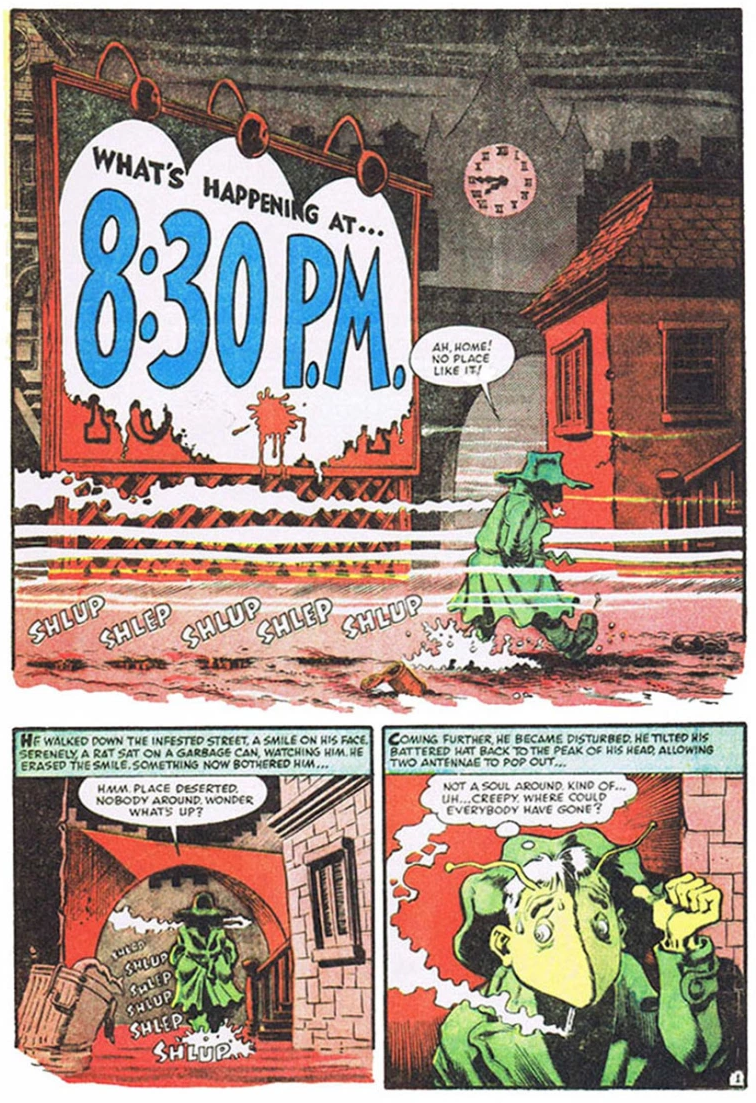This year there was no entry into Gotham Calling’s winter tradition of spotlighting sci-fi war comics. I’ll compensate with yet another list of short stories that similarly treat science fiction, not so much as a challenging, head-scratching experience, but as pretext to put neat high concepts at the service of exciting tales, slickly told… In spirit, they’re the brief comic book equivalent of classic movies like Jack Arnold’s beautiful The Incredible Shrinking Man or Franklin Schaffner’s powerful Planet of the Apes.
Don’t get me wrong: I love how comic book creators have used the medium’s various anthologies to briefly try out mind-boggling concepts, celebrating utter weirdness in tales such as ‘Captain Baboon’s Space-War!’ (Mystery in Space #68) or ‘The Invisible Etchings of Salvador Dali’ (2000 AD #515).
Today I want to pay homage to more straightforward story ideas, though. Below is a sample of twelve comics that nail a sort of archetypical science fiction at its finest, leaving it up to readers to decide how far they wish to engage with the tales’ heady themes. (Yes, as usual, many of them are from EC’s anthologies in the early 1950s… What can I say: those comics remain a high point in the medium’s history!)
‘Am I Man or Machine?’ (originally published in Weird Fantasy #13, cover-dated May-June 1950), by Bill Gaines (plot), Al Feldstein (plot, script, art), Marie Severin (colors), and Jim Wroten (letters)
A man shows up at his fiancée’s door two years after he supposedly died in a car crash and tells her a macabre story about how his brain was rescued by a couple of scientists, detailing the various steps they took to bring him back. The execution is simple, but effective (like the title). Never mind the fake science – what sells ‘Am I Man or Machine?’ is the emotional payoff, somehow enhanced by the contrast with the relatively cold, stiff aura of Al Feldstein’s figures and prose. The result feels both tragic and somewhat comical, with discernable traces of romance comics and film noir.
‘A Granule of Time’ (originally published in The Spirit newspaper strip, March 1947), by Will Eisner (script and art), Jerry Grandenetti (art), and Martin DeMuth (letters)
The time-travelling premise of the intro above is only one of about three or four interlinked plotlines in this pulpy thriller, where the crime-fighting vigilante known as the Spirit finds himself in the middle of a competition between a trio of scientists (and if you think academic research is a fierce field now, wait until you get a load of their violent shenanigans!). ‘A Granule of Time’ is entertainingly convoluted, with tons of action and intrigue in just a few pages… It’s also a visual treat, full of atmospheric smoke and original angles, courtesy of Will Eisner’s typically dynamic style.
‘The Incredible Eyes of Arthur Gail!’ (originally published in Strange Adventures #77, cover-dated February 1957), by Edmond Hamilton (script), Sid Greene (pencils), Joe Giella (inks)
After a chemical experiment goes wrong, Arthur Gail becomes unable to see non-organic matter, which is a fancy way of saying that he can see plants, wooden objects, people, and clothes (thus protecting the story from the Comics Code Authority), but little else. Visually, it’s a great conceit: his perspective provides a lot of eerie negative space and characters suspended in the air, whose surroundings you have to imagine yourself. The premise also allows for that very sci-fi gesture of inviting readers’ estrangement when they look at the world around them, calling attention (through absence) to how much metal, plastic, and cement shape our everyday lives. The irony is that Gail’s sight of a nostalgia-inducing non-urban, de-industrialized world (‘No cars, no buildings visible – nothing but the people, the parkway trees and the grass!’) leads him into a plot of corporate espionage, merging different sensibilities of 1950s’ America.
‘It’s Full of Demons’ (originally published in Time Warp (v2) #1, cover-dated May 2013), by Tom King (script), Tom Fowler (art), Jordie Bellaire (colors), Dezi Sienty (letters)
A fresh approach to a classic trope. It isn’t a trope I particularly care for, but Tom King’s script pulls it off quite elegantly and the art team of Tom Fowler and Jordie Bellaire make ‘It’s Full of Demons’ pure eye candy, giving a light touch to the heaviest of matters. It’s hard to get into details without spoiling the pleasure of figuring things out, but suffice it to say the whole thing grows into an alternate history piece that once again proves perspective is everything.
‘Life’s Illusion’ (originally published in Wasteland #10, cover-dated September 1988), by Del Close, John Ostrander (script), David Lloyd (art, colors), Steve Craddock (letters)
The notion that much of our life is a deception generated and managed by hidden forces is a perennial sci-fi motif, one that grew exponentially in our postmodern age of overwhelming media manipulation and virtual realities (by the late 1990s, you would find it in films as diverse as Dark City, The Matrix, and The Truman Show). It’s a paranoia-inducing notion that lends itself to philosophical interrogation (going back to Plato’s allegory of the cave) and to sociopolitical musings about different forms of power over our perceptions (an issue as topical as ever). Although tapping into this tension, ‘Life’s Illusion’ plays it essentially for laughs, with exasperated aliens working around the clock to preserve a man’s illusion of normality. Most of the humor comes from David Lloyd’s deadpan art, including elaborate mechanical contraptions where the aliens sweat away between labor disputes.
‘Lost in the Microcosm’ (originally published in Weird Science #12, cover-dated May-June 1950), by Bill Gaines (plot, Al Feldstein (plot, script), Harvey Kurtzman (art), Marie Severin (colors), and Jim Wroten (letters)
In this visually commanding slice of comics, a man finds himself shrinking into a submicroscopic world and beyond. Harvey Kurtzman delivers at least one unforgettable image per page, toying not just with the changing sizes of the protagonist’s surroundings but also with the distorted perspectives you get from tilted angles. Al Feldstein’s script is just as remarkable, both because of the sympathetic voice narrating the constantly unfolding premise – inspired by Henry Hasse’s 1936 short story, ‘He Who Shrank’ – and because of the comic’s humbling ending, whose anti-nationalist tinge feels especially poignant when you consider it was first published at the dawn of the Cold War…
I should add that ‘Lost in the Microcosm’ probably served as inspiration for one of my favorite Superman tales, ‘Bigger Than Big, Smaller Than Small’ (Superman Adventures #47, from Scott McCloud’s lovely run on that series).
‘Match & Set’ (originally published in Epic Illustrated #9, cover-dated December 1981), by Lee Mars (script, art, colors)
Even without the amusing punchline, ‘Match & Set’ would’ve been worth reading just for Lee Mars’ skillful way with action. This is basically one long set piece – a confrontation in the wilderness, with futuristic technology – but rendered with the verve and precision of a master storyteller. The oneiric color choices create a particularly fun contrast with the comic’s theme.
‘The Monster from the Fourth Dimension’ (originally published in Three Dimensional EC Classics #1, cover-dated Spring 1954), by Bill Gaines (plot, Al Feldstein (plot, script), Bernie Krigstein (art), Marie Severin (colors), and Jim Wroten (letters)
As the title indicates, the story concerns an encounter with a creature operating in an extra, fourth dimension – no, it’s not the dimension of time, but just an additional geometrical layer (i.e., its relationship to us is like our relationship to a bidimensional drawing). To visually convey the new layer, this was initially a 3-D comic, although I only have the 2-D version in black & white (scanned above), collected in Master Race and Other Stories. It’s still an astonishing work, thanks to Bernie Krigstein’s efficient use of Zip-A-Tone and pleasing compositions (I also love how he turns a small scene in a scientist’s house into an explosion of sharp designs). Storywise, though, the idea isn’t developed into anything special, with the narrative going for a basic thriller (‘We’ve got to kill it, Hank!’) rather than for thoughtful speculation about how to communicate with such a creature.
Yes, it’s another Al Feldstein script. More than that: ‘The Monster from the Fourth Dimension’ is actually the remake of a comic originally drawn by Feldstein himself (published three years before, in Weird Science #7), but it’s worth tracking down Krigstein’s version, especially as the Master Race collection provides an informative discussion of his technique. (If you’re a nerd like me, get yourself a copy of Feldstein’s Child of Tomorrow and Other Stories as well, so that you can compare the artists’ different choices!)
‘Red Light’ (originally published in Metal Hurlant (v2) #2, cover-dated September-October 2002), by Geoff Johns (script), Christian Gossett (art), Snakebite (colors)
In the aftermath of an alien invasion, a man is condemned to live perpetually under a powerful red light. This is another instance of a clever, perfectly executed little tale – while neither the premise nor the payoff are very original, it’s precisely the very use of recognizable tropes as shorthand that makes ‘Red Light’ so damn effective, especially the climactic *visual* revelation.
‘Spores from Space!’ (originally published in Mystery in Space #1, cover-dated April-May 1951), by Gardner Fox (script), Frank Frazetta (art)
An atypically somber tale by Gardner Fox. It’s ostensibly about an invasion of spores from outer space which freeze everything around them, but it’s hard not to see in it a Twilight Zone-ish commentary on Cold War paranoia, already riffing on the kind of tropes that would become a staple of 1950s/60s’ sci-fi cinema and television (and which Susan Sontag analyzed in her seminal essay ‘The imagination of disaster’). I love the sheer narrative scale of the whole thing: I’ve seen hours-long blockbuster movies with less story and pathos than these eight pages!
‘The Startling Success of Sideways Scuttleton’ (originally published in 2000 AD #327, cover-dated July 1983), by Alan Moore (script), John Higgins (art), and Jack Potter (letters)
I get quite a kick out of the kind of narrative possibilities opened up by the notion of parallel worlds, especially when it comes to communication between Earths whose history diverges only in very specific ways (I’ve mentioned before that one of my favorite shows in recent years was Counterpart). Alan Moore must feel the same, since he has gone to that well a number of times… One of his earlier forays, ‘The Startling Success of Sideways Scuttleton’ doesn’t run with the concept very far, but there is a droll charm to the proceedings, much of it stemming from the protagonist’s own charisma. Thanks to John Higgins’ impeccable design and Moore’s reliable wit (it’s always worth recalling that Moore is one of the funniest writers in comics), you may doubt the veracity of the yarn spun by the smirky, conman-looking Scuttleton, but you immediately know it’ll be worth your attention!
‘What’s Happening at… 8:30 P.M.’ (originally published in Witches Tales #25, cover-dated June 1954), by Nat Barnett (script) and Howard Nostrand (art)
In this noirish nightmare, a protagonist with Robert Mitchum’s sleepy eyes isn’t sure of his identity and can’t understand why everyone around him acts the way they do… This could’ve been creepy enough by itself, but the red backgrounds – combined with the fact that he’s a green guy with antennae – take it up a notch or two. Like in ‘Red Light,’ the coloring serves for more than mood and Nat Barnett’s plot is pretty much a vehicle towards a final revelation (hell, the title suggests as much!), but Howard Nostrand’s Eisneresque touches make ‘What’s Happening at… 8:30 P.M.’ much more than a mere gimmick-driven tale. It’s a seriously underrated gem by an underrated artist.

